Amidst the turbulent backdrop of the Spanish Civil War, ‘Guernica’ emerged from Pablo Picasso’s canvas as a powerful testament to the horrors of war and an enduring symbol of peace. This evocative piece, wrought from the ashes of conflict, not only captures the abject terror inflicted upon the innocent township of Guernica in 1937 but also transcends time and place to reflect the universal anguish of war-torn societies. As we navigate through the labyrinth of its historical context, we uncover the oppressive shadow of fascism that spurred its conception, witness how it captured the era’s socio-political zeitgeist, and understand the profound effect it had on Picasso’s artistic trajectory.
Historical Context of Guernica
The Genesis of ‘Guernica’: A Deep Dive into Picasso’s Anti-War Symbolism
In the annals of modern art, few pieces have incited as much scholarly discourse as Pablo Picasso’s ‘Guernica’. This seminal work stands as a testament to the horrors of war and the profound capabilities of art to respond to political and humanitarian crises. To fully grasp the profundity of ‘Guernica’, one must delve into the historical and personal catalysts that led to its creation.
The immediate catalyst for ‘Guernica’ was the appalling bombing of the Basque town of Guernica, Spain, on April 26, 1937, amid the fraught backdrop of the Spanish Civil War. The town was pummelled by German and Italian air forces allied with the Nationalist forces of General Francisco Franco, causing devastating civilian casualties and leveling much of the township. This atrocity was reported widely and generated global outrage.
Amidst this climate of political turmoil, Picasso, a Spaniard living in France, received a commission for a mural from the Spanish Republican government for the 1937 Paris World’s Fair. While initially struggling with the theme, the news of the bombardment provided a stark epiphany. The visceral response to the tragedy fuelled Picasso’s resolve to capture the sheer brutality and senselessness of the attack.
Within the context of ‘Guernica’, one discerns a departure from traditional depiction to a tableau filled with abstracted anguish and chaos, a composition befitting the incomprehensibility of the event it represents. The monochromatic scale further intensifies the drama, drawing a stark parallel with the bleakness of a newspaper photograph, the very medium through which many first learned of the bombing’s atrocities.
The portrayal of anguished beings, from the bereaved mother cradling her lifeless child to the fallen warrior, elucidates the universal impacts of war’s savagery. The terrified horse and bull, recurring motifs in Picasso’s oeuvre, fuse Spanish cultural iconography with larger symbols of innocence corrupted and valor in distress.
This work, however, transcended its immediate political impetus, imbuing a timeless and borderless resonance. As a paragon of anti-war art, ‘Guernica’ reminds humanity of the transcendental language of imagery, an art that threads through the cognizance of the collective conscience, urging reflection on the absurdity and cruelty of conflict.
Thus, ‘Guernica’ emerges not only as a response to a specific historical event but as a pervasive reminder of the perpetual grief that warfare imposes upon civilisation. It is a stentorian denunciation of aggression that rouses contemplation and, ideally, stirs the souls towards paths of peace and reconciliation. Through the interplay of dark and light, shape and line, ‘Guernica’ endures as an emblematic narrative, articulating the silent screams of those who can no longer speak.
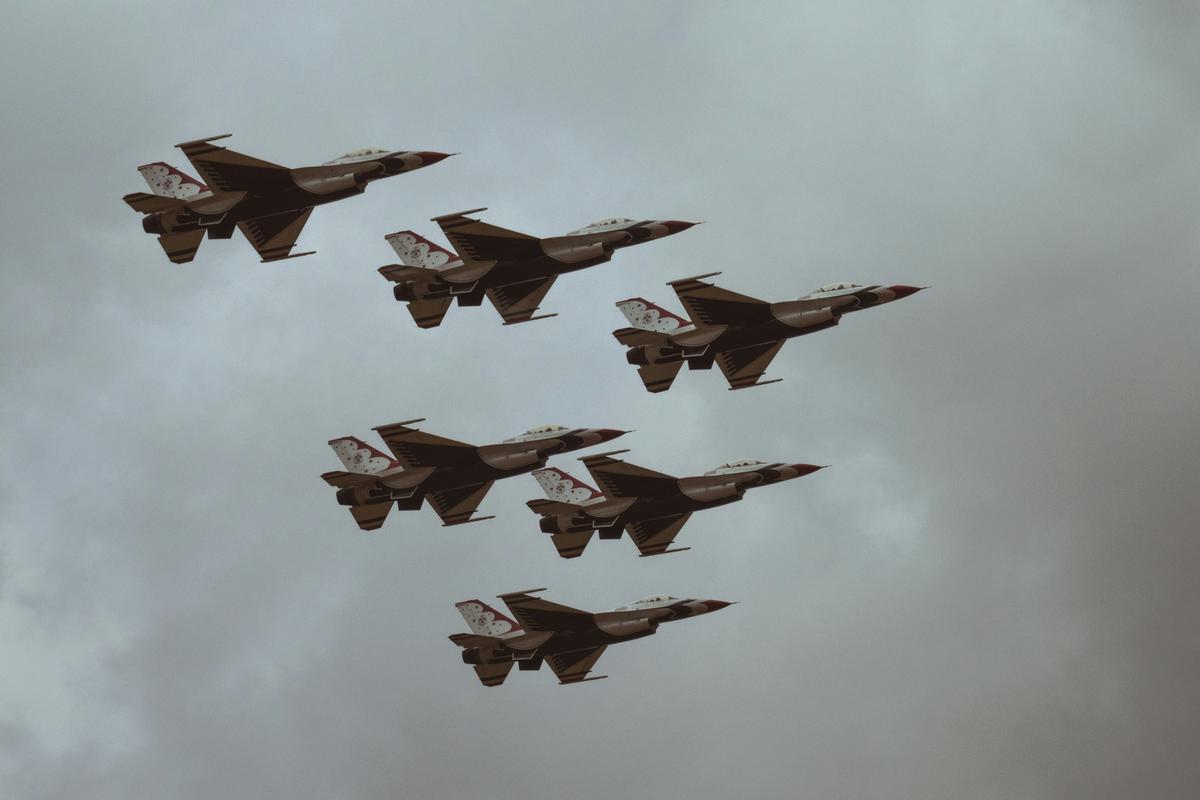
Symbolism and Interpretation in Guernica
In the intricate tapestry of ‘Guernica,’ Picasso employs an array of symbols to underscore the inhumanity of war and the suffering it inflicts upon individuals, societies, and cultures. The symbolism within ‘Guernica’ is neither arbitrary nor superficial; rather, it stems from a profound contemplation of the human condition and the barbarity of war.
An emblematic figure featuring prominently in ‘Guernica’ is the grieving woman clutching her deceased child, a poignant echo of the Christian Madonna and Child. This image, however, is not one of sacred tranquillity but a harrowing portrayal of loss and maternal despair. The subversion of a traditionally venerated icon into a wrenching embodiment of sorrow speaks to war’s ruthless violation of innocence and sanctity.
The pierced, wailing horse in the center of the composition is a recursing symbol in Picasso’s oeuvre, often representing the people and their suffering under the yoke of oppression. In ‘Guernica,’ the agonized equine figure, contorted in pain amidst the chaos, is universally interpreted as a manifestation of the anguish of the civilians caught in the ferocity of the conflict. The prominence and intensity of this figure encapsulate the essence of the mural’s emotive force.
Adjacent to the horse, a fallen warrior is depicted with a severed arm still grasping a shattered sword. A flower emerges from the grip of his lifeless hand, offering a glimmer of hope amongst devastation. This juxtaposition of symbols illustrates the resilient human spirit, blooming amidst the destruction wrought by war, and signifying the potential for rebirth and renewal in the wake of annihilation.
In the upper portion of the mural, amid the scenes of desolation, the presence of an electric bulb, fashioned to resemble an all-seeing eye, hovers ominously. It has been interpreted as the ‘bulb of evil,’ a modern proxy for the sun or a malign eye, witnessing the unrestrained violence unleashed below. Its light, unlike the natural light of the sun also present in the composition, accentuates the stark, chilling atmosphere of technological warfare, a nod to the machinery of death that rained destruction upon Guernica.
Lastly, the bewildered bull standing unscathed amidst the carnage carries multifaceted interpretations. Within Spanish culture, the bull can symbolize strength, resilience, and nationhood. In ‘Guernica,’ it may stand as a silent guardian or a remorseless force, observing the unfolding horror with an ambiguous impassivity. Being one of the few animals depicted without overt signs of distress, the bull’s calm amidst calamity becomes a haunting contrast, making its symbolism all the more enigmatic.
The potency of these symbols mobilizes ‘Guernica’ beyond the realm of visual art and elevates it to a universal declaration. It transcends the specifics of the Spanish Civil War, speaking to the broader human experience, imploring reflection, and igniting dialogue on the devastating consequences of violent conflict. The profound use of symbolism ensures that Picasso’s ‘Guernica’ remains not merely a historical record but a timeless herald of peace.
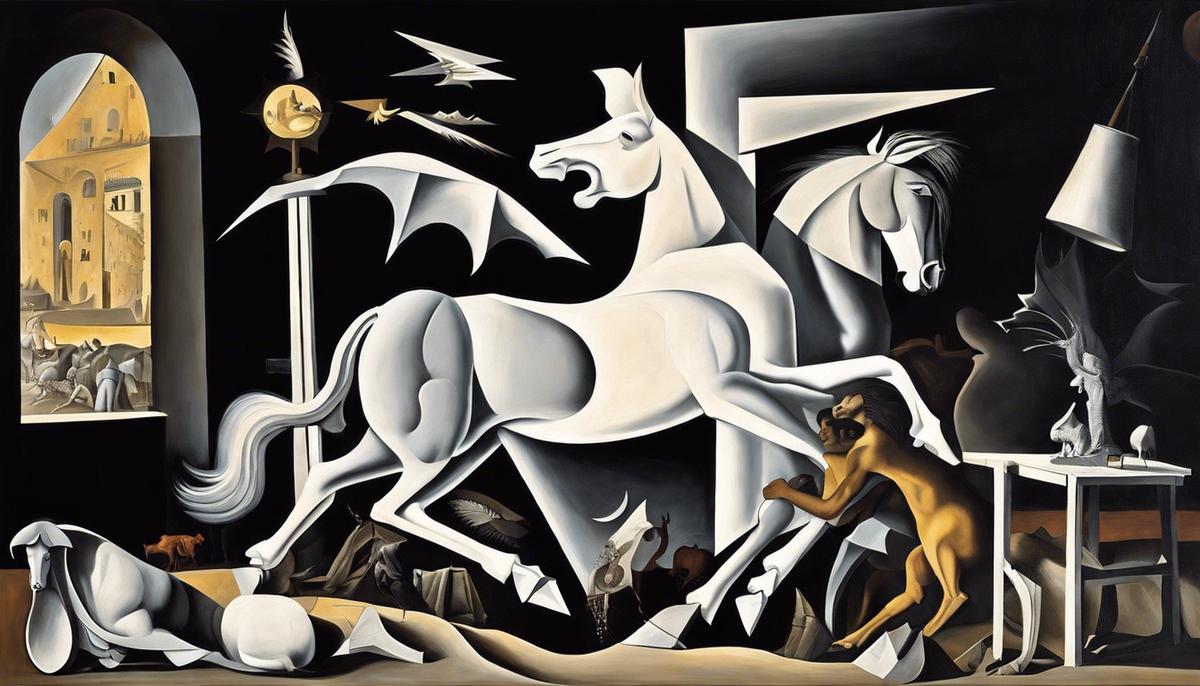
Guernica’s Artistic Techniques
Within the confines of “Guernica,” one observes an orchestration of artistic techniques deployed by Pablo Picasso, the import of which gives rise to a provoking conduit for emotional and intellectual engagement. Lending intense scrutiny to these methods elucidates the profound effects envisioned by the artist in one of the twentieth century’s most stirring artistic testimonies against the destructive forces of war.
Central to Picasso’s visual vocabulary in “Guernica” is the technique of dislocation and deformation. By intentionally contorting figures and spatial perspective, the artist escapes the realm of realism, channeling instead the internal disarray birthed from violent strife. The overlapping and fragmenting of forms disrupts the viewer’s innate desire for order, reinforcing a sense of turmoil and disorientation.
Intertwining with this is Picasso’s adept utilisation of distortion, which he employs to emphasize the emotional gravitas of the scene. Faces and bodies are wrenched into almost unrecognizable entities, speaking to the dehumanizing effect of war. Stricken features and agonized expressions render a visceral response that evokes empathy. The distortion of anatomical elements, notably in the contorted limbs and oversized, piercing eyes, bears witness to the suffering souls of Guernica’s civilian population.
Picasso harnesses the raw power of cubism to further articulate the multidimensional aspects of human experience during conflict. By fracturing the traditional perspective and presenting multiple viewpoints simultaneously, he captures the concept of temporal simultaneity—one witnesses a barrage of happenings in a single, static exposition. Thus, cubism not only underscores the complexity of the emotional states portrayed but also conveys the chaotic nature of the times.
Dynamic tension is masterfully generated through Picasso’s strategic placement of stark light and shadow, employing the contrasts to sculpt forms out of the bleakness. This chiaroscuro effect not only guides the spectator’s gaze but also delineates the elemental struggle between enlightenment and oblivion, sparing no subtlety in accentuating the harsh realities disclosed within the canvas.
Another pivotal technique is the calculated use of negative space, which in its vacuity speaks as loudly as the forms it enfolds. This emptiness functions as a haunting reminder of loss, a vacuum left by the lives obliterated and worlds shattered due to the senseless carnage of warfare. It potentiates a pause, a silent echo amid the visual cacophony, allowing for reflection and absorption of the depicted atrocities.
In sum, Picasso’s “Guernica” is a master class in the deployment of artistic techniques as transmitters of profound emotion and poignant commentary. Through dislocation, distortion, cubist motifs, dramatic contrasts, and the poignant use of negative space, Picasso constructs a tableau that is as much an indictment of the barbarity of war as it is a composed study in the language of visual arts. The result is a perpetually relevant and arresting statement that harnesses the evocative power of art to catalyse social consciousness and a collective yearning for a more humane world.
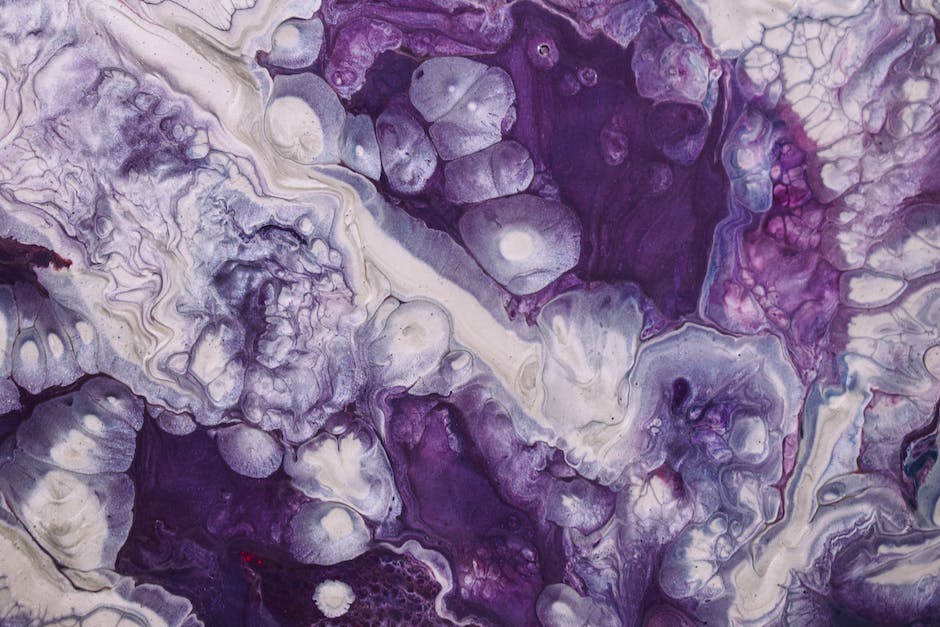
Guernica’s Legacy and Influence
Guernica’s Profound Influence on Modern Artistic Narratives and Historical Understanding
In the pantheon of modern art, “Guernica” by Pablo Picasso stands as a testament to the enduring capacity of visual art to encapsulate historical trauma and to function as a means of social commentary. The mural’s repercussions have echoed through time, influencing contemporary art and historical interpretation with indisputable force. This article seeks to unravel and probe the manner in which “Guernica” has profoundly shaped both the artistic landscape and the discourse surrounding historical events and conflicts.
The multifaceted influence of “Guernica” extends well into various realms of modern art, notably in the ambit of conceptual artistry. This masterwork has become a touchstone for artists endeavoring to communicate potent political messages through abstract imagery. Its non-obvious representations eschew literal interpretation, empowering observers to delve into the conceptual layers and unearth the multiplicity of meanings within. This has spurred a shift towards art that invites more active participation from the viewer in the creation of meaning, an approach that continues to gain currency in artistic circles.
Concomitant with its impact on narrative art, “Guernica” has also precipitated a dialogue between art and installation. Artists have been inspired by the mural’s monumental scale, recognising that size can be leveraged to engender an immersive experience, capable of enveloping the observer and eliciting a visceral response. In the contemporary scene, this has led to the proliferation of large-scale works that aspire to envelop the audience in the artist’s intended emotional or intellectual milieu.
Furthermore, “Guernica’s” stark monochromatic palette has influenced the use of colour in modern art. Artists have looked to Picasso’s choice to strip the work of colour, translating this into explorations of how hue and tone can be manipulated to underscore themes and direct viewer interpretation. Practitioners of visual art have taken note of the manner in which colour restraint can amplify the potency of subject matter, a lesson learned directly from the mural’s haunting grayscale.
Beyond the aesthetic dimensions, “Guernica” has reshaped the pedagogical and interpretative frameworks of historical events in academia. Historians and scholars have drawn from the mural’s narrative structure to illustrate the complexity of wartime experiences, utilising it as an educational tool that transcends textual analysis. The multifaceted nature of the piece, dense with symbolic elements, encourages a broadened scope when interpreting historical records, promoting a multidisciplinary approach that incorporates artistic expressions as primary historical documents.
The artwork’s layered symbolism and fragmented cubist style have set a precedence for examining non-linear and multi-perspective approaches to historical narratives. This has enabled a departure from strictly chronological or unilateral historical accounts, towards more intricate reconstructions of events seen through a prism of different experiences and interpretations, akin to the shattered forms and intersecting planes of Picasso’s seminal work.
In the continuing study of conflict and its representations, “Guernica” has been harnessed as a paradigm for understanding the interwoven nature of cultural expression and the politics of remembrance. The painting operates not only as an artefact within a specific historical context but as a living document that challenges and expands our perceptions of the past. It stands as a behemoth in the art historical canon, one which has urged subsequent generations to consider the layered narratives of art, memory, and history.
The resplendent legacy of “Guernica” remains its capacity to spur ongoing discourse that intersects the domains of art, history, and politics. The enduring relevance of the mural gestures towards a collective obligation to reconcile with the past through the contemplative lens of art. “Guernica” has not only influenced succeeding generations of artists and historians but has also encouraged a broader public engagement with the intricate language of artistic expression and its dialogue with humanity’s historical conscience.
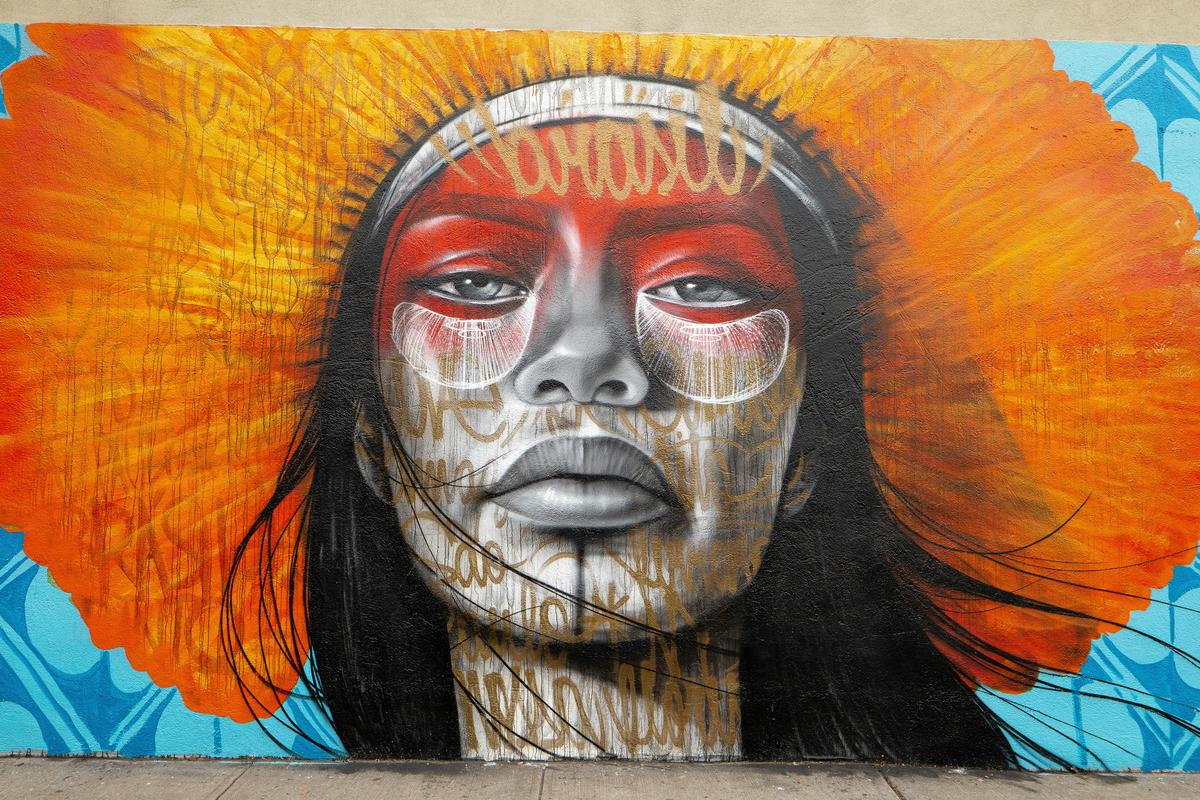
Conservation and Display of Guernica
Confronting the Conservation and Exhibition Challenges of ‘Guernica’: Strategies for Preserving Picasso’s Masterpiece
Pablo Picasso’s ‘Guernica’, both a monumental work of art and a profound political statement, presents unique challenges in conservation and display that require meticulous strategies to ensure its integrity and public impact. As custodians of this significant 20th-century artefact, conservators grapple with the dual responsibility of preserving its physical state and maintaining the potency of its message for future generations.
One primary challenge is the mural’s sheer size at 3.49 meters (11 feet 5 inches) tall and 7.76 meters (25 feet 6 inches) wide. Its vast dimensions necessitate a robust structural support system to prevent sagging and stress on the canvas. The transport and display of ‘Guernica’ therefore require customised infrastructure that can accommodate its size while minimising handling risks.
Environmental factors such as light, humidity, and temperature also pose a significant threat to ‘Guernica’s’ longevity. Prolonged exposure to intense light can lead to fading and deterioration of the delicate paint surface. Hence, the display arena must provide filtered and controlled illumination, as well as regulated climatic conditions to thwart any environmental degradation.
A further issue is the inherent fragility of the materials. Picasso completed ‘Guernica’ rapidly in response to the horrifying events it portrays, employing materials available at the time which were not necessarily selected for their durability. As a conglomeration of oil paint on canvas with disparate materials, preservation efforts must navigate a fine line between arresting decay and retaining the original character of the artwork.
Moreover, the haunting monochromatic scheme — an essential component of the work’s thematic gravity — compounds conservational complexity. Ensuring the stability of the black, white, and grey tones while avoiding color distortion is one of the subtle arts of conservation science.
In terms of display strategy, ‘Guernica’ must be positioned in a manner that allows spectators to engage with the mural’s scale and dramatic intensity. Often, this necessitates a dedicated space where viewers can absorb the artwork from multiple vantage points, fostering a full immersive encounter with its scenes of anguish and devastation.
Interactive and educational programmes surrounding ‘Guernica’ have thus become an integral part of its exhibition. These initiatives strive to articulate the historic underpinning and global significance of the mural, reinforcing its relevance in current socio-political discourse. The attendant responsibility is to foster an environment where dialogue and learning are propelled by the artwork’s visceral narrative.
Furthermore, as an anti-war symbol, ‘Guernica’ must be ceaselessly represented with a certain gravitas that respects its message and the tragic events it encapsulates. Exhibition strategies must thus also tread with sensitivity, ensuring that the display not only respects the artistic value but also upholds the dignified remembrance of the lives lost that the mural signifies.
While ‘Guernica’ continues to act as a potent historical document and a masterclass in artistic expression, the responsibility to conserve and exhibit the piece is a complex endeavour. It demands a multifaceted approach combining expert conservation techniques, rigorous scientific research, and a considered exhibition strategy. Only through these concerted efforts can we ensure that ‘Guernica’ persists not only as a static image but as a powerful voice in the ongoing discourse for peace and human dignity.
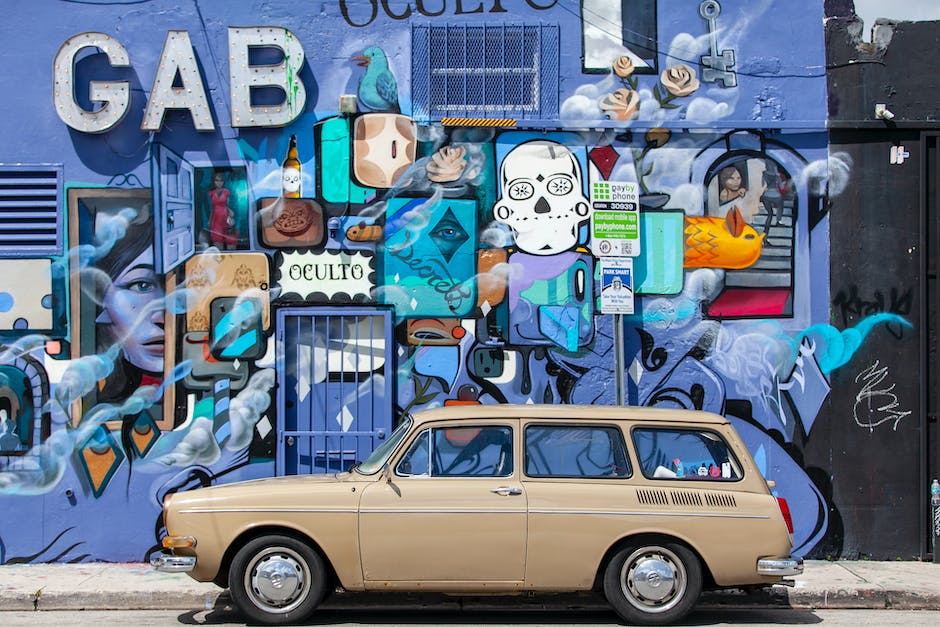
Through its enduring presence, ‘Guernica’ stands as an unwavering reminder of the cost of conflict and the resilience of the human spirit. Its canvas, a tableau of suffering and strength, has been meticulously conserved, an act as much about protecting a piece of cultural heritage as it is a pledge to remember history’s darker chapters. As the mural continues to be displayed with the dignity it deserves, its testament to the atrocities of war and the enduring plea for peace remain as relevant today as ever, infusing new vitality into Picasso’s monochromatic mural for generations yet to come.






















